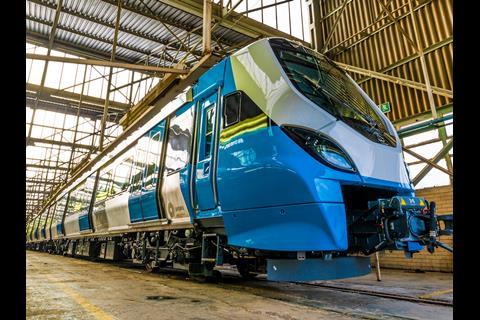SOUTH AFRICA: Speaking at the Africa Rail conference in Johannesburg on June 30, Dr Popo Molefe, Chairman of Passenger Rail Agency of South Africa, reiterated his company’s commitment to a series of signalling and infrastructure enhancements worth R172bn, including adoption of ETCS tailored to local conditions.
Prasa operates commuter services in five city regions, using its own 1 067 mm gauge infrastructure in Gauteng, Cape Town and Durban, and running over Transnet Freight Rail’s tracks in East London and Port Elizabeth. Of these, the Gauteng Metrorail network is by far the largest and most intensively used, serving the cities of Johannesburg and Pretoria and the suburbs around them.
With the delivery of 580 six-car EMUs from the Alstom-led Gibela consortium now underway to renew its fleet entirely over the next 15 years, Prasa is turning its attention to infrastructure. A key objective is to reduce typical headways between trains from 15 min to 2½ min and to provide bidirectional operation over much of the network to improve reliability.
Molefe said that the opening of a centralised traffic control hub known as the Gauteng Nerve Centre in Kaalfontein earlier this year had marked a significant step in adopting ‘a more technological approach’ to keeping trains running. Seven of 92 sections of the Gauteng network are now being supervised from GNC. Praising the work of Siemens, which was lead contractor for the GNC project, and Prasa’s other international signalling contractors including Bombardier and Thales, Molefe urged local companies to ‘focus on quality and deliver a reliable network every single day’ to keep ageing assets operational as upgrading work gathers pace in the years to come.
Prasa is expected to call tenders for the provision of an automatic train protection system by the end of the year in the next phase of the signalling enhancements. Siemens is also building an Interlocking Test Facility to provide an off-site validation centre for signalling equipment which will be able to replicate any location on the Prasa or TFR networks, the company reports.
‘Even while we address governance issues within Prasa, we are committed to this transformation’, he insisted, reflecting criticism of the operator from government auditors earlier this year that was seen as a contributory factor in the departure of Prasa’s high-profile CEO Lucky Montana in March.
Acting CEO Nathi Khena added that Prasa would continue to ‘invest today, tomorrow and the day after that’ in its infrastructure, stressing that there would be no return to the ‘boom and bust spending cycle of the 1980s’. He said that he expected the R172bn capital expenditure budget to be increased later this year to reflect the emergence of new long-term investment plans. ‘We want young men and women to want to work in rail in South Africa’, he added.
- Read more detail about the Prasa signalling programme in the September 2014 issue of Railway Gazette International, which is available to subscribers through the digital archive.



















